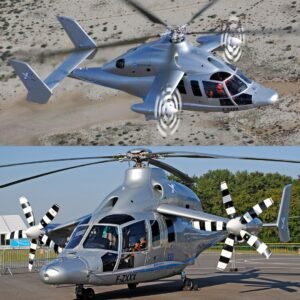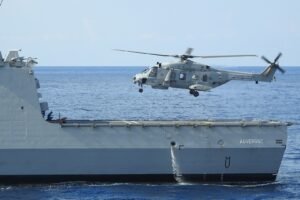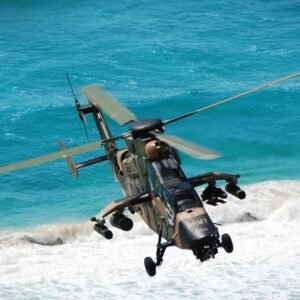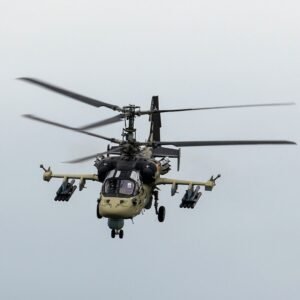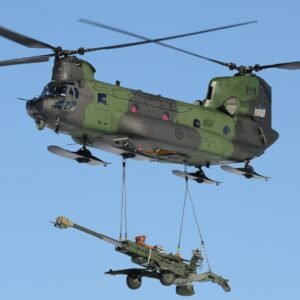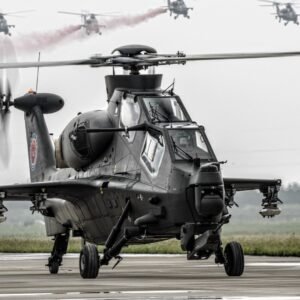Bell AH-1 Cobra Attack Helicopter
The AH-1 Cobra is an iconic attack helicopter. It has been a crucial part of air warfare for over five decades. Originally developed by Bell Helicopter Textron, the AH-1 Cobra has served as a lethal weapon in various military operations around the world. The helicopter is equipped with advanced weapons and technology, making it an ideal weapon for close air support and anti-armor missions. In this article, we will take a closer look at the AH-1 Cobra Attack Helicopter and its features, capabilities, and role in air warfare.

Bell AH-1 Cobra Attack helicopter:- History and Development
The AH-1 Cobra Attack Helicopter was first developed in the 1960s as a replacement for the outdated Bell UH-1 Huey helicopter. The Huey was used extensively in the Vietnam War for troop transport and medical evacuation missions but lacked the firepower and agility required for close air support and anti-armor missions.
The AH-1 Cobra was designed to fill this gap and was first deployed by the United States Army in 1967. The helicopter was an immediate success and proved to be a formidable weapon in combat operations. The Cobra was later adopted by the United States Marine Corps and several other countries around the world.

Army Cobra Helicopter:- Features and Capabilities
The AH-1 Cobra Attack Helicopter is a twin-engine, two-seat helicopter that is designed for close air support and anti-armor missions. The helicopter is equipped with a 20mm Gatling gun mounted in a turret under the nose, along with a variety of rockets and missiles.
The Cobra is also equipped with advanced avionics and targeting systems that allow the pilot and co-pilot to locate and engage targets with precision. The helicopter can fly at speeds of up to 220 miles per hour and has a range of approximately 300 miles.
The AH-1 Cobra is also highly maneuverable, allowing it to operate in tight spaces and in close proximity to friendly forces. The helicopter can hover and maneuver in all directions, making it an ideal weapon for urban warfare and other complex environments.
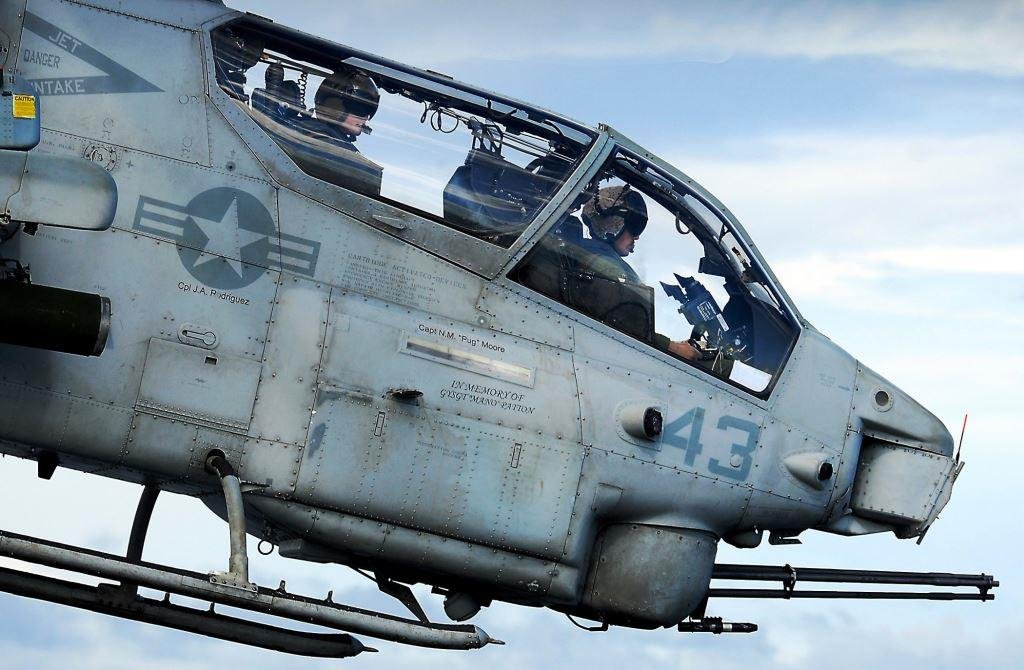
Bell AH-1 Cobra Attack Helicopter:- General Specifications
| Specification | AH-1 Cobra |
| Length | 53.4 feet (16.3 meters) |
| Height | 13.5 feet (4.11 meters) |
| Main rotor diameter | 44 feet (13.4 meters) |
| Maximum speed | 170 mph (274 km/h) |
| Range | 250 miles (~400 km) |
| Crew | 2 (pilot and co-pilot/gunner) |
| Powerplant | 2× T53-L-703 turboshaft engines |
| Armament | 1× 20mm M197 3-barrel Gatling gun, 2× external wing-mounted pylon stations for weapons, 7-tube 2.75-inch (70 mm) Hydra 70 rocket pods, TOW anti-tank guided missiles, Sidewinder air-to-air missiles, Hellfire air-to-ground missiles, Stinger air-to-air or air-to-ground missiles, Cluster bombs, General-purpose bombs |
| Sensors | Target Acquisition and Designation System(TADs), Night Vision Goggles (NVGs), Radar Warning Receiver (RWR), Missile Approach Warning System (MAWS), Electronic Countermeasures (ECM) and Global Positioning System (GPS): |
AH-1 Cobra Attack Helicopter:- Role in Air Warfare
The AH-1 Cobra Attack Helicopter has played a critical role in air warfare since its inception. The helicopter is primarily used for close air support and anti-armor missions, where it can provide direct fire support to ground forces and engage enemy armored vehicles.
The Cobra is also used for reconnaissance and surveillance missions, where it can provide real-time intelligence to ground forces and other aircraft. The helicopter can fly at low altitudes and speeds, allowing it to avoid detection by enemy radar and ground-based air defenses.
In addition to its offensive capabilities, the AH-1 Cobra is also used for defensive missions, where it can provide air cover and protection for ground forces. The helicopter is equipped with advanced defensive systems, including electronic countermeasures and flares, which can help it evade enemy missiles and other threats.

Overview of The Different Variants of The AH-1 Cobra Attack Helicopter
AH-1G Huey Cobra:
This was the first production model of the AH-1 Cobra, which entered service in 1967 with the US Army. It was armed with a 20mm M195 Gatling gun, TOW missiles, and rockets. It was used extensively in the Vietnam War and subsequent conflicts.
AH-1Q/S Cobra:
This variant was introduced in the late 1970s and featured improved engines, avionics, and night-fighting capabilities. It also had a wider range of armaments, including Stinger missiles and 70mm rockets. The AH-1Q/S was primarily used by the US Army.
AH-1T Improved SeaCobra:
This variant was introduced in the early 1980s and was used by the US Marine Corps. It had improved avionics, night-fighting capabilities, and a more powerful engine. It also had a wider range of armaments, including TOW missiles and Hellfire missiles.
AH-1W SuperCobra:
This variant was introduced in the late 1980s and was a major upgrade to the AH-1T. It had a more powerful engine, improved avionics, and a wider range of armaments, including the AIM-9 Sidewinder missile. The AH-1W was used by the US Marine Corps and was also exported to several other countries.
AH-1Z Viper:
This is the latest variant of the AH-1 Cobra, which was introduced in the early 2000s. It has a new four-bladed rotor system, upgraded engines, and improved avionics. It also has a wider range of armaments, including the AGM-114 Hellfire missile and the AIM-9X Sidewinder missile. The AH-1Z is currently in service with the US Marine Corps.
In addition to these major variants, there have been several other modifications and upgrades. The AH-1 Cobra over the years, including the AH-1E/F, AH-1J, and AH-1P/S. These modifications have included improvements to the helicopter’s engines, avionics, and armaments, as well as changes to its external appearance.
Each variant of the AH-1 Cobra has its own unique features and capabilities. All variants have played a critical role in air warfare over the years. The helicopter’s versatility and adaptability have made it a valuable asset to militaries around the world.

AH-1 Cobra Attack Helicopter Prototypes
The AH-1 Cobra Attack Helicopter had several prototypes before the production of the first operational version.
Bell Model 209: This was the first prototype of the AH-1 Cobra and was developed in the mid-1960s. It was initially developed as a private venture by Bell Helicopter and was designed to be a dedicated attack helicopter.
Bell Model 309 KingCobra: This prototype was developed in the late 1960s as a follow-up to the Bell Model 209. It was designed to have a more powerful engine. This helicopter has a wider range of armaments but was not put into production due to budgetary constraints.
Bell Model 249: This prototype was developed in the early 1970s and was designed to be a more advanced version of the AH-1G. It featured a four-bladed rotor system and improved avionics but was not put into production due to budgetary constraints.
Bell AH-1J SeaCobra: This prototype was developed in the early 1970s and was designed specifically for the US Marine Corps. It had improved avionics and was capable of operating from amphibious assault ships.
Bell AH-1S Cobra: This prototype was developed in the late 1970s and was an upgraded version of the AH-1G. It featured improved engines, avionics, and a wider range of armaments, including Stinger missiles.
These prototypes were used to test new technologies and features that would later be incorporated into production models of the AH-1 Cobra.
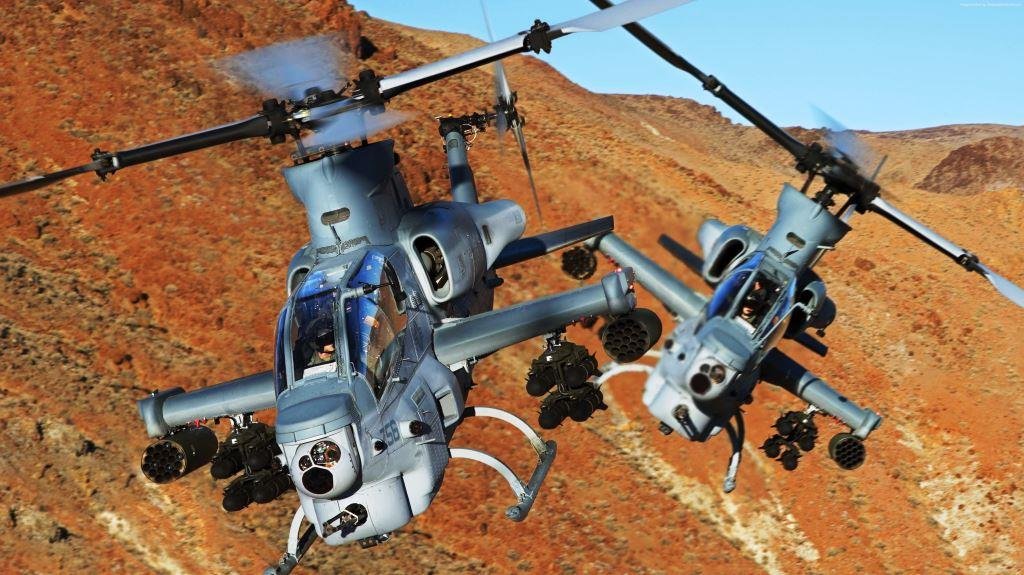
Overview of The AH-1 Cobra vs AH-64 Apache
The AH-1 Cobra and AH-64 Apache are two of the most iconic attack helicopters in the world. While both have similar roles in providing close air support and anti-armor capabilities, there are several differences between the two helicopters.
- Size and Capacity: The Apache is significantly larger than the Cobra, with a length of 58.17 feet and a height of 15.24 feet, while the Cobra has a length of 53.4 feet and a height of 13.5 feet. The Apache also has a higher payload capacity, with the ability to carry more weapons and ammunition.
- Speed and Range: The Apache is faster and has a longer range than the Cobra. The Apache has a maximum speed of 227 miles per hour and a range of over 300 miles, while the Cobra has a maximum speed of 170 miles per hour and a range of about 250 miles.

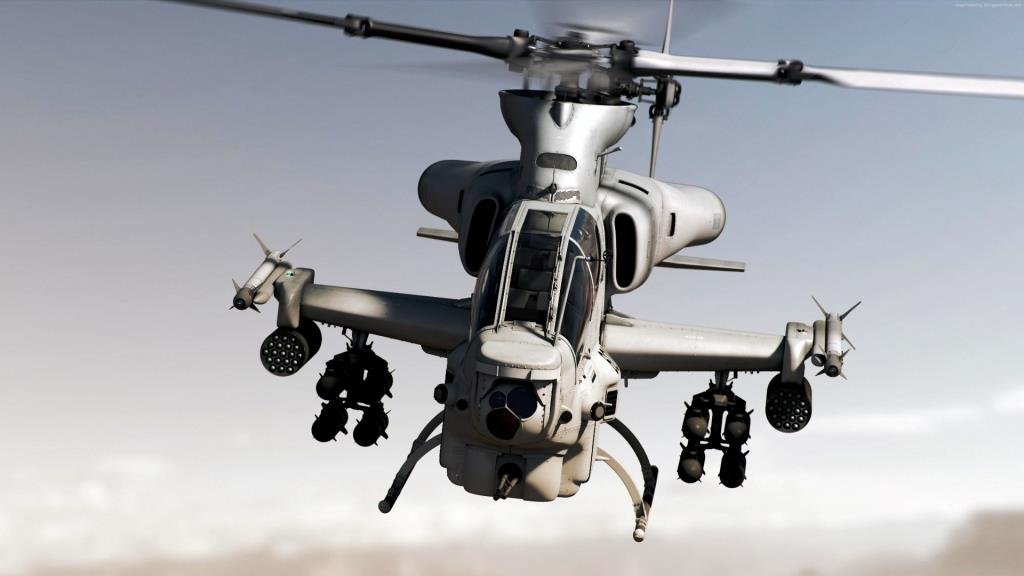
- Avionics: The Apache has more advanced avionics and electronics than the Cobra, including advanced targeting systems, infrared sensors, and radar. The Apache’s targeting system allows it to detect and engage targets at long ranges, while the Cobra relies on visual targeting.
- Armaments: Both helicopters are armed with a range of weapons, including missiles and rockets, but the Apache has a wider range of armaments than the Cobra. The Apache can carry a mix of Hellfire missiles, rockets, and 30mm automatic cannons, while the Cobra can carry TOW missiles, rockets, and a 20mm automatic cannon.
- Maneuverability: The Cobra is more maneuverable than the Apache due to its smaller size and lighter weight. The Cobra is able to perform tight turns and maneuvers in tight spaces, which can be useful in urban combat scenarios.
You know about Chinese Attack Helicopter:- CAIC Z-10 Attack Helicopter and Boeing CH47 Chinook Helicopter.




